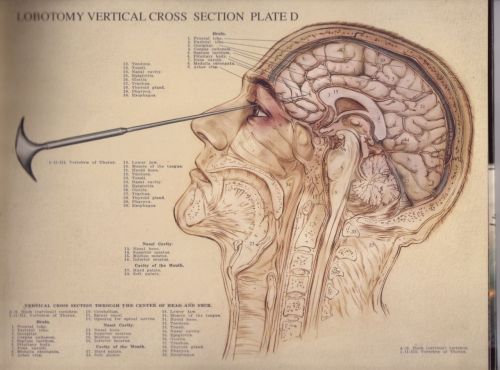Lobotomy was a misguided and now largely obsolete psychiatric treatment, in which the prefrontal cortex of the brain would be intentionally damaged by inserting a long pointed rod, called an orbitoclast, through the eye socket. The orbitoclast was then thrust into the brain with a small hammer, in an attempt to bring about a change in the patient's behaviour.
Rather than being cured, those that survived the quick and allegedly painless operation, often had negative repercussions, such as greatly reduced cognitive functioning or severe pain. There were, however, very occasionally some patients, such as 1940's French Canadian singer Alys Robi, who claimed that the lobotomy she was forced to undergo had actually been beneficial to her.
 |
| A still from the lobotomy scene in 'Sucker Punch' |


I just watched about a documentary about lobotomy! What a coincident...
ReplyDelete@Vagina Galore
ReplyDeleteReally? That's random! Who was it about?
@Lilia Tombs
ReplyDeleteIt was in general about the history of asylums in the UK. There they talked about frontal lobotomy etc etc. Quite intresting!